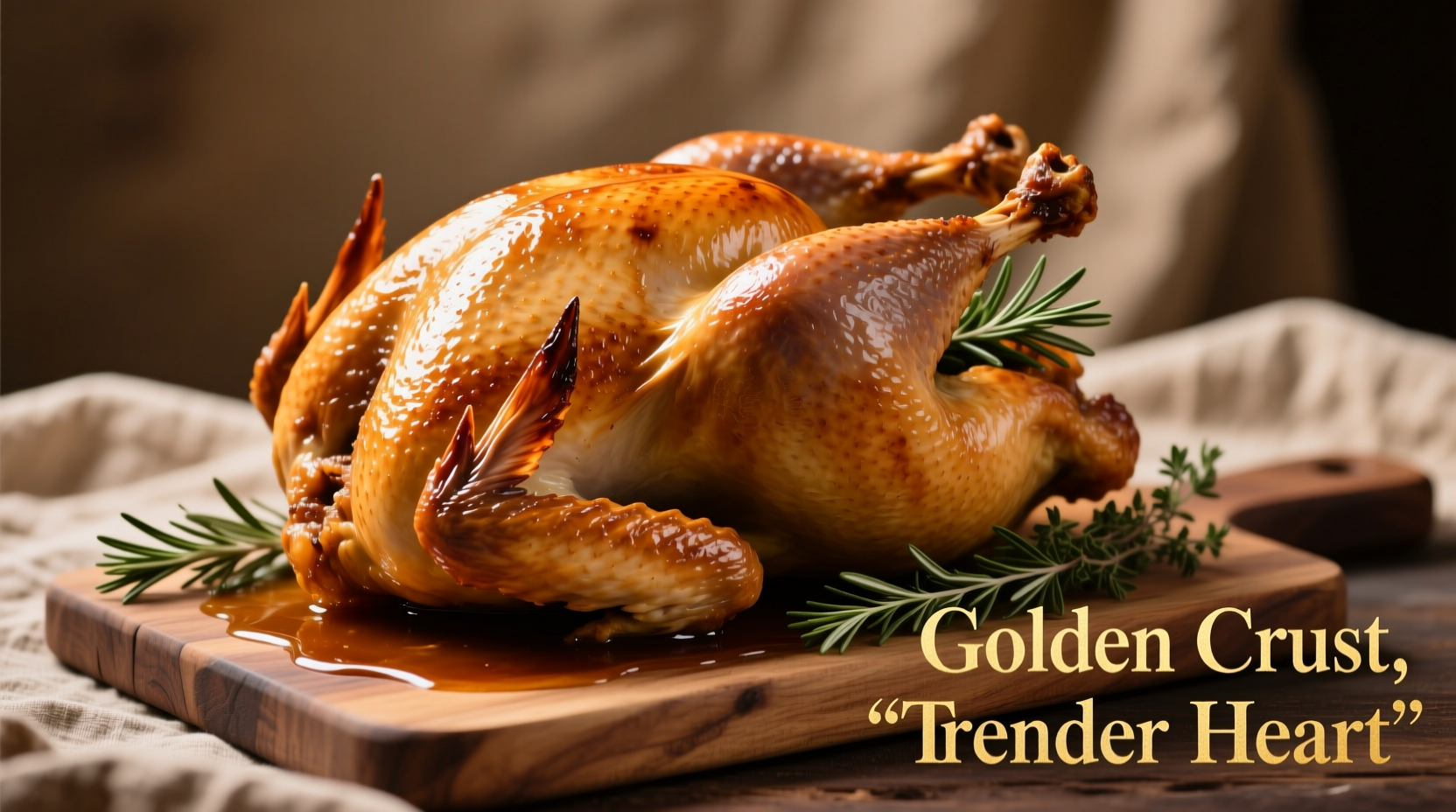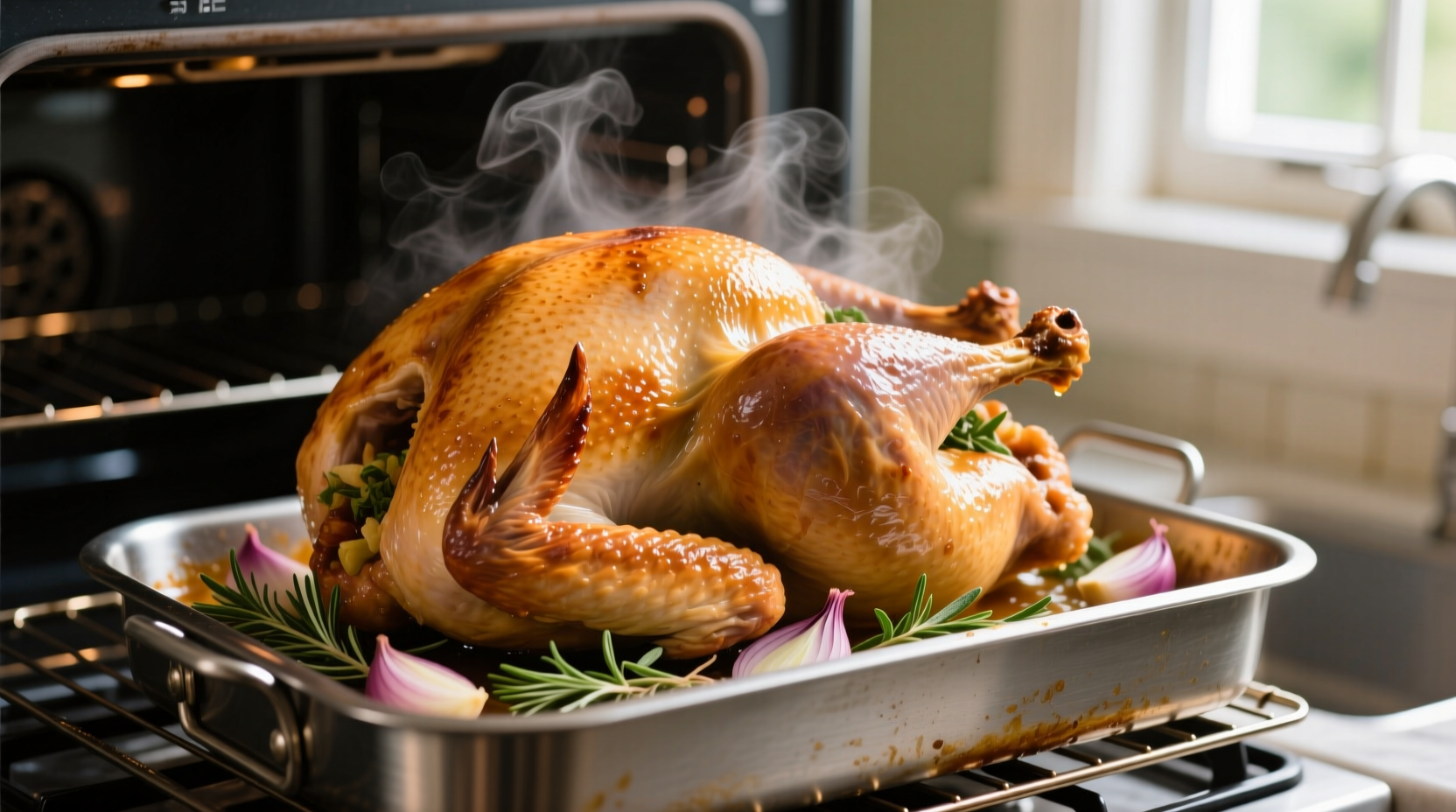For a 10 lb turkey cooked at 325°F, the ideal cooking time is 3 to 3.5 hours when unstuffed, or 3.5 to 4 hours when stuffed. Always verify doneness with a meat thermometer—your turkey is safe to eat when the thickest parts of the breast and thigh reach 165°F.
Planning your holiday meal? Getting the cooking time right for your 10-pound turkey is crucial for both food safety and perfect results. As someone who's cooked hundreds of turkeys in professional kitchens and home settings, I've learned that timing alone isn't enough—you need to understand the variables that affect cooking and how to properly check for doneness.
Why Cooking Time Varies: Beyond the Basic Formula
While the standard guideline suggests 13 minutes per pound for an unstuffed turkey at 325°F, several factors influence actual cooking time for your 10 lb bird:
- Oven accuracy: Home ovens often vary by 25°F—use an oven thermometer for precision
- Starting temperature: A turkey straight from the refrigerator takes longer than one brought to room temperature
- Pan type: Dark roasting pans cook faster than shiny aluminum
- Rack position: Middle rack provides most even heat distribution
- Convection vs. conventional: Convection ovens reduce cooking time by about 25%
According to the USDA Food Safety and Inspection Service, "Cooking times will vary based on the equipment used and preparation techniques." Their research shows that relying solely on time can lead to undercooked poultry, which poses serious food safety risks.
Your Step-by-Step Cooking Timeline for a 10 lb Turkey
| Time Interval | Action Required | Internal Temperature |
|---|---|---|
| 0-60 minutes | Initial cooking phase - no peeking | 100-120°F |
| 60-120 minutes | Check for breast browning; tent if needed | 120-140°F |
| 120-180 minutes | Begin temperature checks in thickest areas | 140-150°F |
| 180-210 minutes | Monitor closely; check every 15 minutes | 150-160°F |
| 210+ minutes | Remove when breast reaches 160°F (will rise to 165°F while resting) | 160-165°F |
Critical Food Safety Information You Must Know
The FDA Food Code specifies that poultry must reach a minimum internal temperature of 165°F to eliminate harmful bacteria like salmonella and campylobacter. This isn't optional—it's a food safety requirement backed by decades of research.
Many home cooks make the critical mistake of checking temperature only in the breast meat. Proper technique requires checking multiple locations:
- Thickest part of the breast (avoiding bone)
- Innermost part of the thigh (without touching bone)
- Wing joint area
- Any stuffing if cooked inside the bird (must reach 165°F)

Pro Tips for Juicy, Flavorful Results
As a chef who's worked in both Michelin-starred restaurants and home kitchens, I've found these techniques consistently deliver superior results:
- Dry brine overnight: Salt the turkey 24-48 hours before cooking for better moisture retention
- Protect the breast: Tent with foil when breast reaches 140°F to prevent overcooking
- Don't skip resting: Allow 20-30 minutes resting time before carving—this lets juices redistribute
- Use a remote thermometer: Insert probe before cooking to monitor without opening oven
- Check oven hot spots: Rotate pan halfway through cooking for even browning
Troubleshooting Common Turkey Cooking Issues
Even with perfect timing, challenges arise. Here's how to handle them:
Turkey cooking too fast: Lower oven temperature by 25°F and check temperature more frequently. If significantly ahead of schedule, turn off oven and let residual heat finish cooking.
Turkey not browning: Increase oven temperature by 25°F during final 30 minutes or use broiler for 2-3 minutes (watch carefully).
Dry breast meat: Next time, try butterflying the turkey or cooking breast-side down for first half of cooking time. For this meal, serve with extra gravy.
Thigh not reaching temperature: Carefully lift leg to expose to more direct heat, or cover breast with foil to redirect heat to darker meat.
When to Trust Your Thermometer Over the Clock
Food safety experts at Butterball emphasize that time is merely a guideline while temperature is absolute. Their research shows that two identical 10 lb turkeys can vary by 45 minutes in cooking time due to minor environmental differences.
Insert your thermometer into the thickest part of the breast, avoiding bone, for the most accurate reading. Digital instant-read thermometers provide the most reliable results—don't rely on pop-up timers, which often trigger too early.
Remember that temperature will rise 5-10 degrees during resting (carryover cooking), so remove your turkey when the breast reaches 160°F. This prevents overcooking while ensuring safety.
Final Checklist Before Serving Your 10 lb Turkey
- ✅ All temperature readings at or above 165°F in multiple locations
- ✅ Juices run clear when thigh is pierced
- ✅ Legs move easily in joints
- ✅ Skin is golden brown (not burnt)
- ✅ Rested for minimum 20 minutes
Frequently Asked Questions
Can I cook a 10 lb turkey at 350°F instead of 325°F?
Yes, but reduce cooking time to 2.75-3.25 hours. Higher temperatures cook faster but increase risk of dry breast meat. The USDA recommends 325°F as the optimal balance of safety and quality for turkey.
How do I know if my turkey is done without a thermometer?
While a thermometer is essential for food safety, visual cues include clear juices when pierced, legs moving freely in joints, and skin that's golden brown. However, these methods are unreliable—USDA research shows poultry can appear done at temperatures as low as 140°F, which is unsafe.
Should I cover my 10 lb turkey with foil while cooking?
Covering with foil isn't necessary initially, but tent the breast with foil when it reaches 140°F to prevent overcooking. Remove foil during the last 30-45 minutes to allow proper browning. This technique, recommended by professional chefs, helps balance cooking between white and dark meat.
How long should I let a 10 lb turkey rest before carving?
Rest your turkey for 20-30 minutes before carving. This allows juices to redistribute throughout the meat, resulting in moister slices. The USDA Food Safety and Inspection Service confirms that resting time is critical for both food safety and quality, as temperature continues to rise 5-10 degrees during this period.











 浙公网安备
33010002000092号
浙公网安备
33010002000092号 浙B2-20120091-4
浙B2-20120091-4